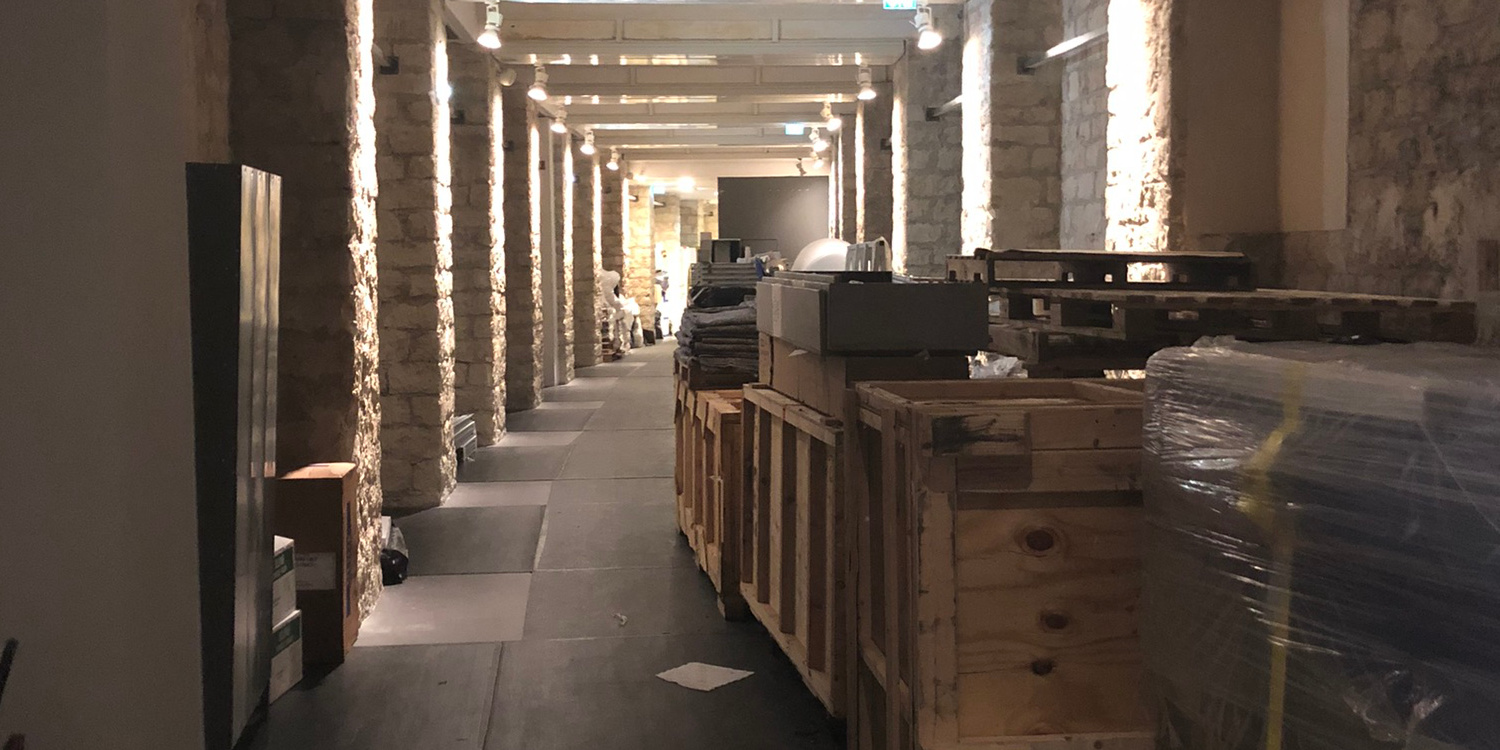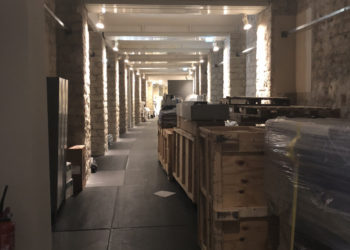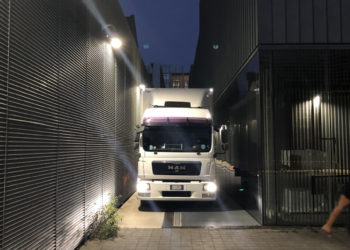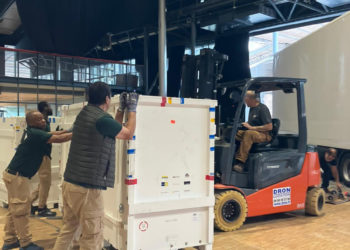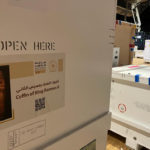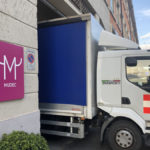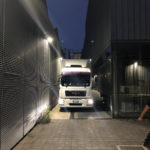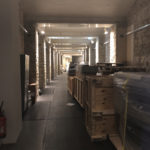Logistics plays a major part in the life of a touring exhibition and in many respects, it could be considered one of the most challenging aspects to a tour. Lack of shipping space, incorrect customs paperwork, port closures, oversized crates and replacing assets – there are many areas in logistics that can affect schedules and jeopardise the entire production. Uncertainty and change are at the heart of touring exhibitions logistics, and this can present many challenges throughout the life of an exhibition.
There are a lot of variables to consider, the logistics landscape is constantly changing as we’ve seen with the issues in the Red Sea with diversions of shipping vessels around Africa. Then we have seasonal congestion and last-minute rate hikes due to lack of space.
Chartering 747 aircrafts containing priceless artefacts to hallmarking jewellery to be sold at an exhibition store, here are EFM, we are having an interesting journey in the touring world of logistics. We would like to share some insights to help avoid some of the unsuspecting issues that can arise along the way in touring logistics, making your next tour that little bit less stressful.
Beyond the ATA
Using ATA carnets, which are often compared to a passport for freight, can be a efficient way of shipping exhibits across international borders. But it’s a common misconception that using an ATA carnet is the best method to move a tour around the world. It might not always be the case when you consider a few key areas. Firstly, not every country has signed up to the carnet system, and even some countries that have signed up prefer not to use them. Also, carnets can be limited to 1 year or 2 years and may need customs approval in certain regions to extend validity. If the carnet is to expire, the freight really has to return back to the country of origin, otherwise you might receive extra charges relating to the value of the goods, and that can prove expensive.
An interesting alternative to the ATA carnet we have been using to move numerous exhibitions is the temporary import status, where the exhibition clears under bond, avoiding import duty and taxes. In most locations, the local logistics company will cover the bond and charge a small percentage of the cost to the organiser. Placing a bond in each new location allows the tour to continue, with no real limitations on the timeline. This also means you can transfer assets back to storage after the exhibition has closed or to join other tours across international borders. As long as the bond is cleared once the exhibition closes and moves onwards to its next location, a temporary import can be a great way to keep a tour flexible and open to new locations.
Another important aspect to customs is using the correct Importer of Record (IoR), the local entity responsible for the importation, to clear the exhibition under their name. Many public institutions, such as museums, have exonerations in place for import taxes and duties. If you are looking to ship artefacts or high value objects on loan, then it is always best to check first if the venue is accredited with any exemptions and if they are willing to act as the IoR. This could potentially save a large amount of guarantee or bond fees and can really make the whole import process much smoother. Otherwise, you might need to pay a huge customs deposit for the customs import duty and VAT or fund the guarantee required to issue the ATA Carnet before you export the exhibition.
From a recent experience, we compared clearing artefacts under a newly set up entity to using the local institution and we found that customs would not even allow the clearance under the newly set up company. The clearance had either to be completed under the museum or under the name of the logistics company acting as the art handler.
Shipping balance
When shipping further afield across continents, using sea freight with 20ft or 40ft containers should be prioritised, as it offers the greenest and a more cost-effective approach. However, it should be planned with caution. There are a number of shipping lines offering the same destinations with different routings, rates, transhipment points and transit times. Choosing the right service could be the difference between lengthy delays or arriving on time – or close enough that the production schedule isn’t affected. The key thing with sea freight is to always aim to find a service that goes direct. Avoid services that offer transhipping to other vessels along the routing – this is where delays can really happen. If a transit time is listed as 50 days port to port and includes a transhipment point, the timeline could easily increase by 10-15 days or more. We recently compared rates and services for an exhibition located in Milan that needed to go to Sydney. We found services ranging from 32 days to 80 days with only a slight difference in ocean costs. Shorter the transit the less likely for the delays. That said, it’s always good to allow a buffer, around 2 weeks on the published transit times to cover any delays. Please bear in mind that if the vessel does arrive on time, there will be fees associated with storing the containers at the destination seaport. The upside is that you will have peace of mind knowing the exhibition will open on time.
We are now experiencing tighter lead times between exhibition opening dates. The tighter the timeline, the less chance of using seafreight as a more cost effective and environmentally friendly option. Airfreight is a quick and reliable service compared to other modes of shipping, but it comes with a premium and has a much higher carbon footprint. Initiating dialogue with logistics partners, as well as integrating lower impact solutions and allowing for buffers, early in the process of tour development, can really help design smoother, more cost effective and sustainable tours for future exhibitions.
The key role of Crate Fabrication
Building crates based on a new exhibition soon to tour is no easy feat. There are lots of things to consider – future venue access limitations, loadability, weight distribution, handling and adequate protection for the tour life. It goes without saying, investing in good quality museum standard crates is well worth the investment. And to consider crating options early enough in the tour design process can really help.
Crates, if well designed and produced, are a good way to maximise space. If they can stack 2 high into a seafreight and yet, be small enough to load to a PAX aircraft, this will help the budget with streamlined loads and lower air costs. Always remember to have crates that can be accessed by any direction with a forklift – 2-way access limits loadability. Also, reusable crates are being developed, with increasingly flexible systems. These should be considered where possible to optimise the overall project impact.
Choosing the Right Partner
Artefacts and objects, exhibitory and merchandise require very different expertise when it comes to shipping, handling and clearances. Art handlers are the go-to for artefacts but might not necessarily be the best option for shipping merchandise requiring test certificates, conformity reports or help to hallmark jewellery. Moving large items such as exhibitory needs a cost-effective approach, but attention to detail way above the usual general forwarder.
It is difficult to get away from the stressful element of touring logistics, so finding the right logistics partner for the right job, and integrating them as a partner early in the process of tour planning, is key. It could be the difference to securing the next venue within your budget or schedule, without compromising the production.

